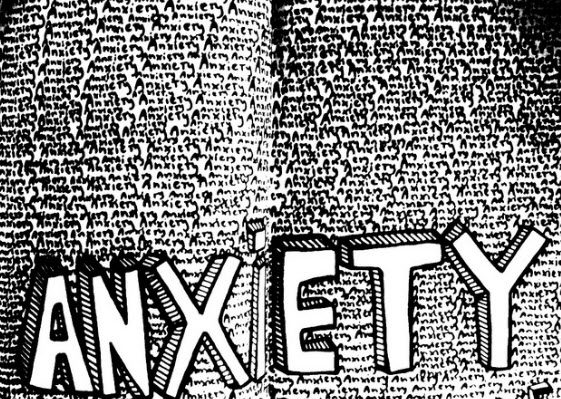Don’t Let Fear and Anxiety Rule Your Life. Learn How to Banish Anxiety and Face Your Fears.
By David
July 9, 2013 • Fact checked by Dumb Little Man

Do you ever feel anxious? That white knuckle, heart stopping, and nausea inducing feeling of dread and panic?
Many of us have experienced these feelings.
Our fears can very quickly overtake you if you’re not careful. But here are 2 simple Cognitive Behavioral Therapy (CBT) based technique that can help to zap your anxiety.
If you put these tips into practice you can begin to overcome your feelings of anxiety, panic and fear.
Face Your Fears
Sometimes the best ways to tackle anxiety is to face your fears. The things that scare us can become overblown and out of proportion to the triggering event or thing (Like when someone has a phobia of harmless spiders – the spider cannot hurt them – but the response is as though the spider was a mortal threat.)
With these ‘big’ fears and phobias, the Cognitive Behavioral Therapy approach is to face them using a process like this:
1. Break the fear down into numbered small steps. Put the most frightening step at the bottom and the least frightening at the top. E.G. if you’re scared of dogs what would be the least scary step you could take (looking at a picture of a dog?) and what would be the scariest (petting a dog?)
2. Work through your list, taking each step in the order you've listed them. Only move on to the next step once you’ve really nailed the previous one.
3. Keep going over each step until you’ve really got it licked. You'll probably feel nervous – even anxious at first – just remember to recognise the progress you've made and congratulate yourself. Celebrating every achievement – even the seemingly small ones, will help to build your confidence in the face of the fear.
4. As you work through your list you’ll begin to notice your strength growing and your fear diminishing. It might feel uncomfortable but it’s worth it.
Are Your Fears Fact Or Fiction?
When you're filled with anxiety it’s easy to get your fears out of proportion and overestimate the level of threat. You can overcome this by looking at things logically and assessing how real the threat really is. Here are some questions to help:
1. What's the worst that could happen?
2. How likely is it to actually happen? Most things we fear are very unlikely to happen – but our worry skews our perspective.
3. Even if the worst DID happen – how could you cope with it? Often even in times of great challenge we can find reserves of strength we never realised we had. Think of the challenges you've faced in the past – how you've survived and grown. Whilst you wouldn't have chosen to go through those tough times, you have weathered them once and can – if you had to, weather them again.
As Christopher Robin Says to Pooh -Promise me you'll always remember: You're braver than you believe, and stronger than you seem, and smarter than you think.”
Above all, remember that we've lots of feelings and emotions that come and go. We all feel scared and anxious from time to time. That’s normal. But there are things you can do when your fears grow and anxiety gnaws at you.
 |
Written on 7/9/2013 by Jo Casey. Jo Casey is a writer, trainer, and coach who specializes in helping people build their resilience in the face of stress, increase their productivity and boost their happiness. She's created the free Decompress & Boost Your Resilience In 5 Minutes A Day video course and is a guest contributor to a number of personal growth blogs. You can find her on Twitter, Facebook and visit her at www.jocasey.com. |
Photo Credit: Mariana Zanatta.”

